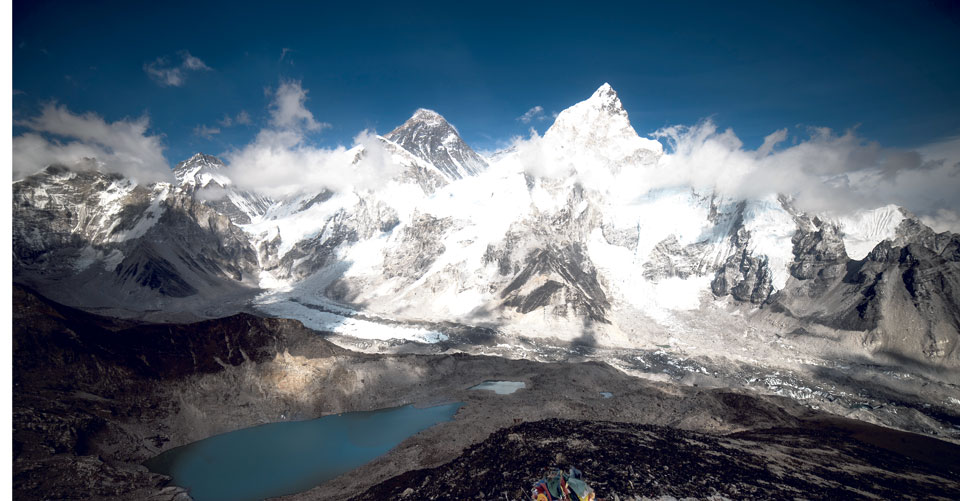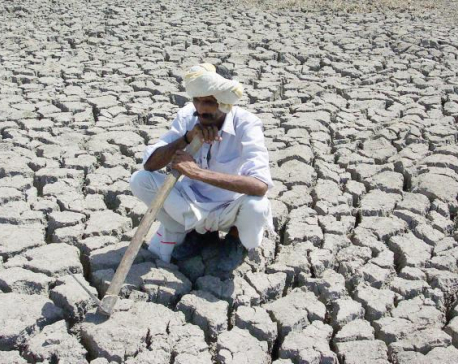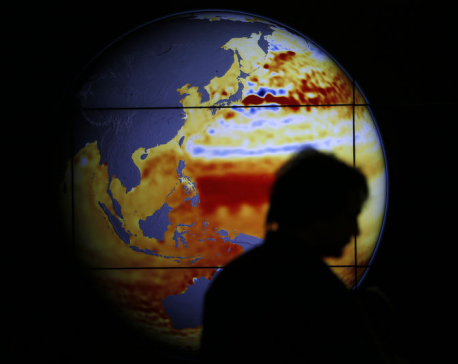
OR
One-third of HKH glaciers will melt by 2100: Report
Published On: February 5, 2019 08:59 AM NPT

KATHMANDU, Feb 5: A study has found that one-third of glaciers in the Hindu Kush Himalaya (HKH) region will melt by the end of the century even if the global target of limiting global warming to 1.5 degrees Celsius is achieved.
The report, Hindu Kush Himalaya Assessment, states that the temperature of the region would increase to 2.1 degrees by the year 2100 which would lead to melting of one-third of the glaciers in the region. If the target to cap the rising temperatures at 1.5 degrees as set in the Paris agreement fails, the temperature in the region would rise to 5 degrees, the report states. Given that context, two-thirds of the glaciers in the region would melt.
“This is the climate crisis you haven’t heard of,” said Philippus Wester of the International Centre for Integrated Mountain Development (ICIMOD), who led the report. “Global warming is on track to transform the frigid, glacier-covered mountain peaks of the HKH cutting across eight countries to bare rocks in a little less than a century.”
The HKH region covers 3,500 kilometers across Afghanistan, Bangladesh, Bhutan, China, India, Myanmar, Nepal, and Pakistan. Nestled in its record-breaking peaks, glaciers feed 10 of the world’s most important river systems, including the Ganges, Indus, Yellow, Mekong and Irrawaddy, and directly or indirectly supply billions of people with food, energy, clean air and incomes.
According to the report, people in the region have already experienced impacts of climate change. The HKH region is already one of the world’s most fragile and hazard-prone mountain regions. Also, the region contains four of the world’s biodiversity hotspots.
Styled after the Intergovernmental Panel on Climate Change (IPCC) reports, the Hindu Kush Himalaya Assessment is the first and most authoritative study of its kind to provide an assessment of one of the world’s most significant, yet often overlooked, mountain regions.
The report developed over five years with inputs from more than 350 researchers and policy experts from 22 countries and 185 organizations have warned climate change will directly affect the mountain dwellers’ livelihood. “The massive size and global significance of the Hindu Kush Himalaya region is indisputable, yet this is the first report to lay down in definitive detail the region’s critical importance to the well-being of billions and its alarming vulnerability, especially in the face of climate change,” said David Molden, director general of ICIMOD.
Though the mountainous region was formed around 70 million years ago, its glaciers are extremely sensitive to the changing climate. Since the 1970s, when global warming first set in, these ice masses have steadily thinned and retreated, and snow-covered areas and the amount of snow have decreased. These changes have ripple effects felt throughout the region.
Greenhouse gases are exacerbated by air pollutants originating from the Indo-Gangetic Plains—one of the world’s most polluted regions. These pollutants deposit black carbon and dust on the glaciers, hastening their melting and changing monsoon circulation, and rainfall distribution over Asia.
As the Nepal earthquake in 2015 laid bare, mountain cities and settlements are vulnerable to disasters—from landslides and erosion to debris flows and floods. As the number and intensity of these disasters increase, more than one billion people are at risk.
These changes hit the region’s poor hardest. About one-third of the 250 million HKH mountain people live on less than $1.90 a day; more than 30 percent of the region’s population doesn’t have enough to eat, and around 50 percent face some form of malnutrition, with women and children suffering the most. The realities of mountain life, such as inaccessibility, fragility and remoteness, make it difficult for people to earn a living in the region; nonetheless, the report points out that mountain people have the potential to earn incomes by better utilizing the region’s resources, such as hydropower potential.
The report also calls for great recognition of mountain areas and the HKH region in global climate efforts.
“We need to start thinking of mountain regions as climate hotspots worthy of urgent attention, investments and solutions,” Dasho Rinzin Dorji, ICIMOD board member from Bhutan, said.
You May Like This

Scientist who popularized term “global warming” dies at 87
NEW YORK, Feb 19: A scientist who raised early alarms about climate change and popularized the term “global warming” has... Read More...

Experts issue global warning and say world is 'well on the way' to rise of 1.5C
South Korea will become the meeting point for representatives from 195 countries who will meet this week to agree on... Read More...

Pacific leaders seek U.S. return to Paris climate pact
SYDNEY, Sept 7: Pacific island nations declared climate change to be their “single greatest threat”, urging Washington to return to... Read More...




Just In
- Health ministry to conduct ‘search and vaccinate’ campaign on May 13
- Indian customs releases trucks carrying Nepali tea, halted across Kakarbhitta
- Silent period for by-election to begin from midnight
- SC issues short-term interim order to govt and TU not to take immediate action against TU legal advisor Khanal
- National consultation workshop advocates to scale up nutrition smart community in Nepal
- Patan High Court issues short-term interim order to halt selection process of NTB’s CEO
- NEPSE inches up 0.15 points; daily turnover increases to Rs 2.53 billion
- Bagmati Govt mandates tri-lingual signboards in offices














Leave A Comment